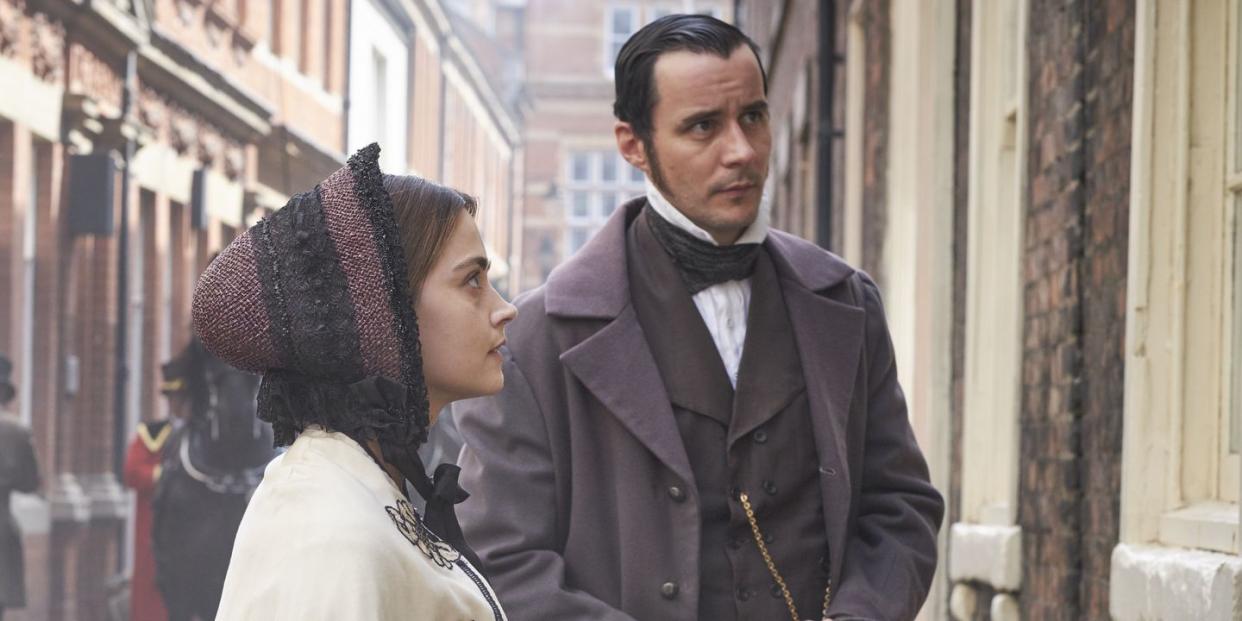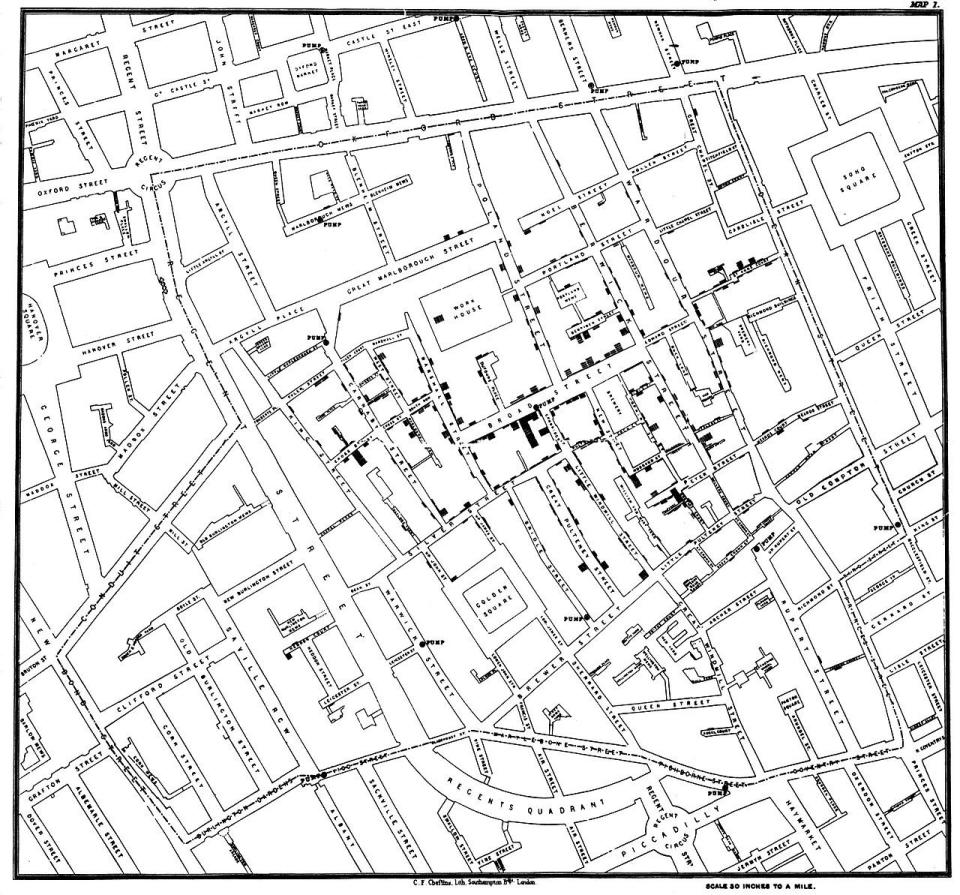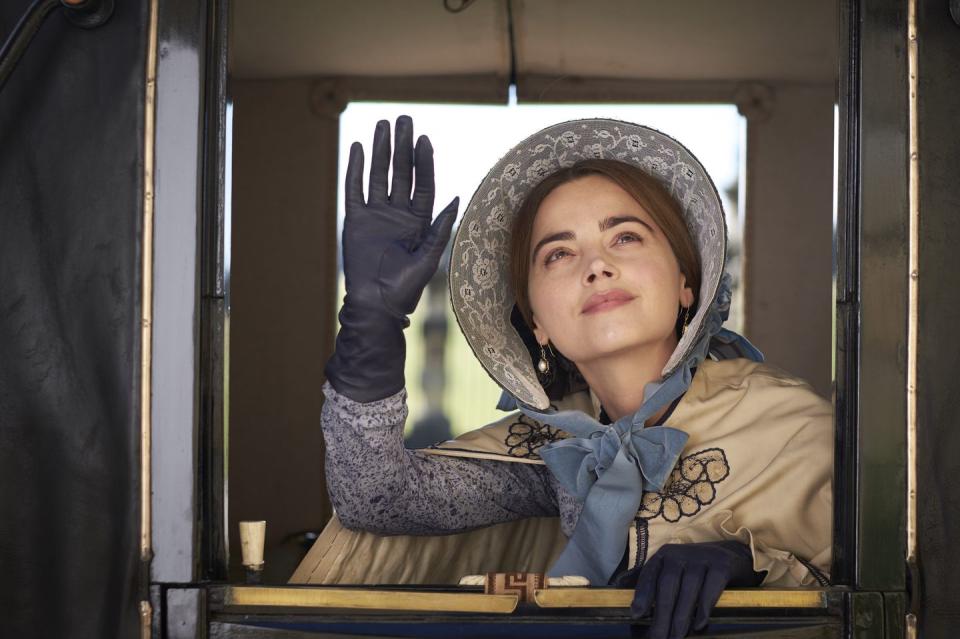Victoria (Mostly) Got It Right: The True Story of John Snow's Cholera Breakthrough

Before there was Jon Snow, King of the North, there was a real-life hero of the same name. Back in 1854, a Dr. John Snow made a medical breakthrough that earned him the title "The Father of Epidemiology"-and his recent portrayal in the period drama Victoria has given us the excuse to celebrate his legacy once again.
Here, we separate out the fact and fiction from John Snow's appearance on Victoria.
There was a cholera outbreak, and Snow did track down its source. But, the timeline of Victoria's third season is a bit wobbly.
The third episode, in which John Snow addresses a cholera epidemic, appears to takes place in 1848 or 1849, given the family's recent trip to Osborne House. But it was actually a few years later, in 1854, that John Snow did his famous detective work.
Snow had been skeptical of the prevailing wisdom that cholera spread through the air, and first asserted his dissent in the 1949 essay, "On the Mode of Communication of Cholera." Five years later, the 1854 outbreak in London's Soho neighborhood would serve as a testing ground for his theory.
It was indeed a serious outbreak. Steven Johnson, the author of a book on the subjected titled The Ghost Map, described the scene at the time. "Hundreds of residents had been seized by the disease within a few hours of one another, in many cases entire families, left to tend for themselves in dark, suffocating rooms," he wrote. "You could see the dead being wheeled down the street by the cartload."
Snow was able to trace the disease to a single water pump on Broad Street (near where Skerrett and Francatelli are building their hotel business on the show). After he removed the pump's handle, the outbreak began to dissipate.

Yes, there was a map. A very famous map.
Snow was indeed able to identify the outbreak's source largely by plotting cases of cholera on a map. This innovation in data visualization was heralded as a key point in the nascent field of epidemiology. Even today, maps such as Snow's are regularly used by public health experts and epidemiologists.
It's true that many of his peers doubted his conclusion.
The "germ" theory of disease championed by Snow wouldn't be fully accepted until the 1860s. The Lancet, a medical journal still around today, was highly critical of Snow's work at the time. "In riding his hobby very hard, he has fallen down through a gully-hole and has never since been able to get out again," The Lancet's founding editor Thomas Wakley wrote in the journal. "Has he any facts to show in proof? No!"
He did see Queen Victoria as a patient.
John Snow was also a pioneer in anesthesiology. Per Baylor University Medical Center's Michael A.E. Ramsay, by 1848, "Snow was the most accomplished anesthetist in the British Isles." In fact, in The Lancet's obituary for Snow, it's his work in this area, not epidemiology, that's noted.
His success with previous obstetric patients lead Queen Victoria to request his anesthetic services for the 1853 birth of Prince Leopold, then again for Princess Beatrice in 1857.
Snow's friend and biographer Sir Benjamin Richardson documented their encounter in his writings. "Previous to the birth of Prince Leopold he had been honored with an interview with His Royal Highness the Prince Albert, and returned much pleased with the Prince's kindness and great intelligence on the scientific points which had formed the subject of their conversation," Richardson wrote.
Naturally, his royal patient made Snow a bit of a celebrity. Richardson recorded for posterity how he dealt with these enquiries. "Inquisitive folk often overburthened Snow, after these events, with a multitude of questions of an unmeaning kind. He answered them all with good-natured reserve. 'Her Majesty is a model patient,' was his usual reply: a reply which, he once told me, seemed to answer every purpose, and was very true."

It's unclear whether the Queen consulted him on the cholera outbreak.
While they certainly knew each other at the time-the 1854 outbreak falls squarely between Leopold and Beatrice's births-the pair aren't on the record for having discussed cholera. Richardson, for his part, didn't record any such conversation.
Snow was a vegetarian-and he also didn't drink.
The doctor forbade himself both meat and alcohol. And as for that speech impediment? According to the John Snow society, he was a "poor speaker with a husky voice," but it's unclear if he had a stutter.
('You Might Also Like',)

